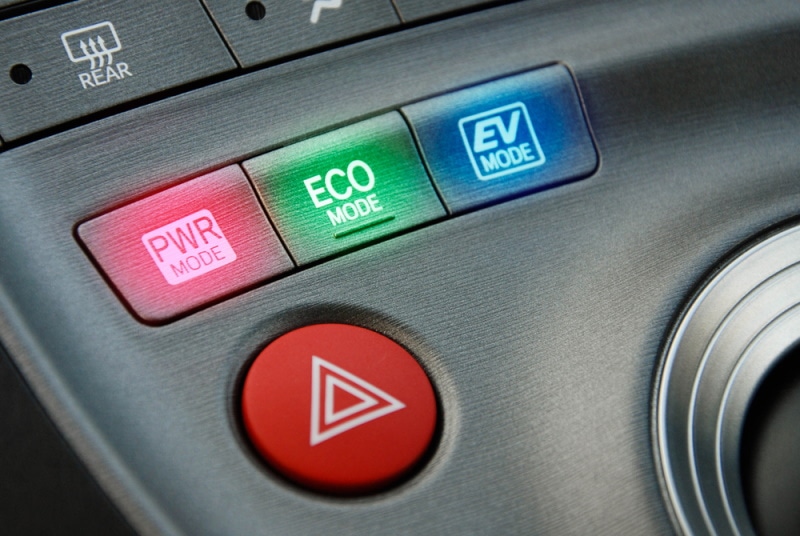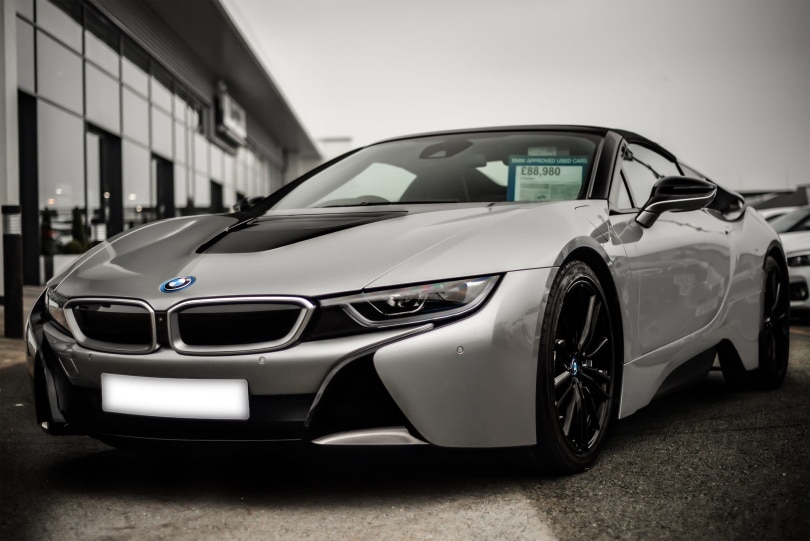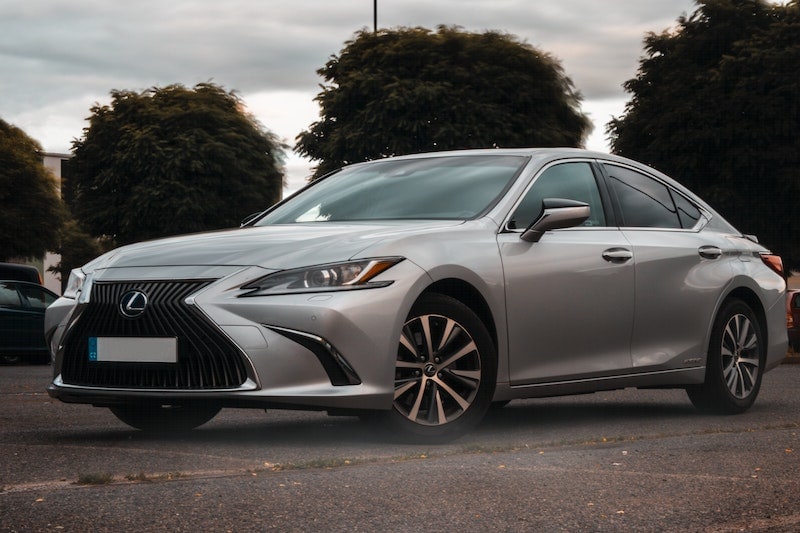How Does a Plug In Hybrid Work? What You Need To Know!
-
Jeff Weishaupt
- Last updated:

A plug-in hybrid is a hybrid electric vehicle (HEV) that combines a gasoline or diesel engine with an electric motor and battery. As the name implies, this vehicle plugs into an external electricity source to charge its battery, unlike a traditional hybrid that uses regenerative braking and other energy sources to recharge the battery.
Below, we explain the working process of a plug-in hybrid. We also mention its advantages and disadvantages.
How Does It Work?
A plug-in hybrid uses batteries and fuel to power a vehicle. The electric motor is connected to a generator, and when the driver accelerates, it generates electricity to charge the batteries.
When the driver brakes, energy is recovered from the motor through regenerative braking, which also helps to recharge the battery. The gasoline engine helps power the vehicle and can be used alone or in combination with the electric motor.
The driver controls when and how much energy to use from the battery and when to rely on the gasoline engine. It gives them flexibility in how they want to drive.
Components of a Plug-in Hybrid

- Battery: The battery powers the vehicle by giving it electricity for starting. It is charged by the internal combustion engine or through an external power source such as a wall outlet.
- Internal Combustion Engine: The engine provides additional power when needed. It runs on gasoline or diesel fuel and is connected to the transmission.
- Charge Port: You charge the battery by plugging one end of the cable into a wall outlet and connecting the other end to the charge port on the car.
- Transmission: The transmission transfers power to the wheels to move the vehicle.
- Regenerative Braking System: The system captures energy from braking and converts it to electricity. Then, it stores the electricity in the battery for later use.
- Electric Motor: The motor is powered by the battery and can provide additional power to the wheels, allowing for increased performance.
- Electric Drive System: The electric drive system manages how much power is transferred from the battery to the motor.
- Control Unit: The control unit is an onboard computer that controls the operation of the electrical components and monitors the battery’s charge.
Where Is It Used?
Plug-in hybrids have become increasingly popular in recent years. In the automotive industry, plug-in hybrids are often used as commuter vehicles due to their fuel efficiency and relatively low emissions. These vehicles are also finding their way into fleets, such as taxi services, delivery companies, and more.
Advantages of Plug-In Hybrids

Plug-in hybrids have many advantages over conventional vehicles. Here are some of them:
Fuel Efficiency
For starters, plug-in hybrids are much more fuel efficient and emit fewer greenhouse gasses than traditional gasoline-powered cars. Since the electric motor is always on, plug-in hybrids use less fuel to travel the same distance as a gasoline-powered car.
Lower Cost
Plug-in hybrids are generally cheaper to operate and maintain than traditional cars. They have fewer moving parts, so they don’t require as much maintenance.
Moreover, with the advent of electric vehicles, plug-in hybrid cars are becoming increasingly affordable.
Environmental Benefits
Since plug-in hybrids use less fuel, they also generate fewer emissions. It makes them better for the environment.

Convenience
You can charge your plug-in hybrid car from home or any place with an outlet. That means you don’t have to worry about waiting in line at the gas station or running out of fuel.
Tax Benefits
In some countries, plug-in hybrid cars are eligible for tax incentives or credits. It can help offset the cost of ownership and make owning one more affordable. The IRS also announced that some plug-in hybrids and electric cars qualify for tax credits per the Inflation Reduction Act.
Increased Range
The latest plug-in hybrids have larger batteries and more powerful electric motors, giving them increased range. You can go further on a single charge, reducing your need to refuel or recharge.
Instant Torque
When you need a burst of power, the electric motor kicks in and provides instant torque. It makes them great for highway merging or passing other cars.
 Disadvantages of Plug-In Hybrids
Disadvantages of Plug-In Hybrids

Although plug-in hybrids offer a lot of advantages, they also have some disadvantages. Here are some of them:
High Upfront Cost
The biggest disadvantage is that many models require a considerable upfront investment. It can be difficult for many people, as a plug-in hybrid vehicle is typically more expensive than a traditional gasoline or diesel vehicle.
Range Limitations
Although plug-in hybrids can travel long distances on electricity, when the battery is depleted, they must rely on their gasoline or diesel engine. Thus, they may not be able to travel as far on a single charge as an electric vehicle can.
Charging Time
Many older plug-in hybrids require a lot of time to charge the battery. For some models, it can take anywhere from 8-14 hours to fully charge the battery.
Environmental Impact
Some critics argue that plug-in hybrids still emit some greenhouse gasses since they use both gasoline and electricity. Thus, they are not considered to be as “green” as an electric vehicle. After all, the electricity you use to charge your plug-in hybrid still produces carbon emissions.
Frequently Asked Questions (FAQs)
Is It Worth Buying a Plug-In Hybrid?

It depends on your lifestyle and where you live. Plug-in hybrids require charging stations, which may not be available in all areas. Additionally, as with any car purchase, you’ll want to consider cost, fuel efficiency, tax credits, and environmental impact. Regardless, plug-in hybrids offer greater fuel efficiency and lower emissions than traditional gasoline-powered vehicles.
Can You Drive a Plug-In Hybrid Without Charging?
Yes, plug-in hybrids are designed to work just like traditional gasoline-powered vehicles. However, they will rely more heavily on the gasoline engine than if it were regularly charged. It can reduce your overall fuel efficiency, so it is best to charge the vehicle when possible.
Are Plug-In Hybrids Good for Long Journeys?
If there are charging stations available along your route, a plug-in hybrid can be a great choice for long trips. However, you’ll need to consider the availability and distance of charging stations before setting out. If there are no charging stations nearby, you may need to rely solely on the gasoline engine for your journey.
Quick Reference Guide
| Features | Electric Vehicle | Hybrid Electric Vehicle | Plug-in Hybrid Vehicle | Mild Hybrid Vehicle |
| IC Engine | None | IC engine and electric motor | IC engine and electric motor | IC engine and electric motor |
| Drive Type | Only electric | Batteries charged by the engine | Batteries charged by external source | Switches to the motor when restarting, coasting, or braking |
| Battery Pack | 20 to 80 kWh | 6 to 12 kWh | None | None |
Conclusion
Summing up, plug-in hybrids provide an economical and convenient way to reduce emissions while continuing to enjoy the benefits of a traditional vehicle. Plug-in hybrids offer drivers the flexibility to choose between running solely on electric power or hybrid mode. Thus, you can take advantage of both the efficiency of a battery-powered motor and the range of a gasoline engine.
- https://afdc.energy.gov/vehicles/how-do-plug-in-hybrid-electric-cars-work
- https://www.consumerreports.org/cars/hybrids-evs/electric-cars-plug-in-hybrids-that-qualify-for-tax-credits-a7820795671/
- https://www.toyotaofclermont.com/blog/the-advantages-and-disadvantages-of-plug-in-hybrids-electric-cars-which-green-car-is-for-you/
- https://www.motorbiscuit.com/plug-in-hybrids-5-advantages-to-consider/
- http://synergyfiles.com/2015/08/types-of-electric-vehicles-in-a-snapshot/
Featured Image Credit: Attapon Thana, Shutterstock
Contents


